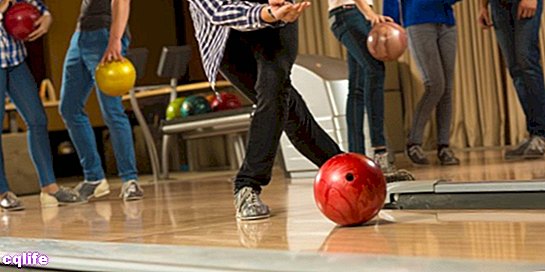We explain what movement is and how it is classified. In addition, the elements that compose it and some examples.

What is movement?
Inphysical Movement is understood to be the change in position that a body experiences in thespace in a certain period of weather. All movement depends on the reference system from which it is observed.
The movement of bodies is studied by means of thekinematics and thedynamic and both are integrated into mechanics. Classical mechanics studies phenomena that involve macroscopic bodies with small speeds compared to that of light.
On the other hand, quantum mechanics describes the laws of behavior of subatomic particles with speeds close to that of the light. Finally, the movement of bodies subject to strong gravitational fields is studied within the framework of general relativity.
Types of movement

According to the type of trajectory that a mobile describes, the movement can be classified into the following categories:
- Rectilineal movement. Describe a body whose path is linear and with parallel velocity and acceleration. It is usually studied in two specific cases:
- Rectilineal movementUniform. Describe a body that has constant velocity, that is, zero acceleration.
- Rectilineal movementEvenly accelerated. Describe a body that has a constant acceleration.
- Uniform circular motion. Describe a body moving around an axis of rotation, with constant radius and constant angular velocity, tracing a circumference. In this type of movement, the bodies have an acceleration in the direction of the center of the circle.
- Simple harmonic movement. It describes a periodic movement such as that of a pendulum or that of an electromagnetic wave (light for example). Mathematically it is described in time by a harmonic function (sine or cosine). The movement may not be harmonic, that is, it may not be repeated in time, but still describe wave paths and in that case it is called wave motion.
- Parabolic movement. Describe a motion that traces a parabola. It is the result of the composition of a uniform horizontal rectilinear movement and a uniformly accelerated vertical one. An example of this type of movement is performed by a ball that is thrown upward at an angle to the horizontal.
Elements of movement
The elements of the movement are its characterizations or describable properties, and they are the following:
- Trajectory. It is the line with which the movement of a specific body can be described and that, according to its nature, can be:
- Rectilinear. Straight line without variations in its trajectory.
- Curved. Curved line, that is, a fragment of circumference.
- Circular. Full circumference.
- Elliptical. Fragment of an ellipse or complete ellipse.
- Parabolic. Parabolic line.
- Distance. It is the amount of space traveled by the mobile in its displacement.
- Speed. It is the relationship between the distance traveled and the time in which the mobile travels it (the higher the speed, the more distance per unit of time a body travels).
- Acceleration. It is the change in speed (final speed minus initial speed) per unit of time.
Movement examples
Some examples of movements are:
- The movement of the stars. The planets revolve around the sun in elliptical orbits.
- The pendulum of a clock. The clocks of yesteryear worked based on the movement of a pendulum to mark the seconds. This movement is the perfect example of the simple pendulum movement, which is the same one we use in the movies to “hypnotize” someone.
- A ball ofbowling. Since the bowling alley floor is waxed to greatly reduce friction, the balls tend to travel in a uniform rectilinear motion until they hit the pins.
